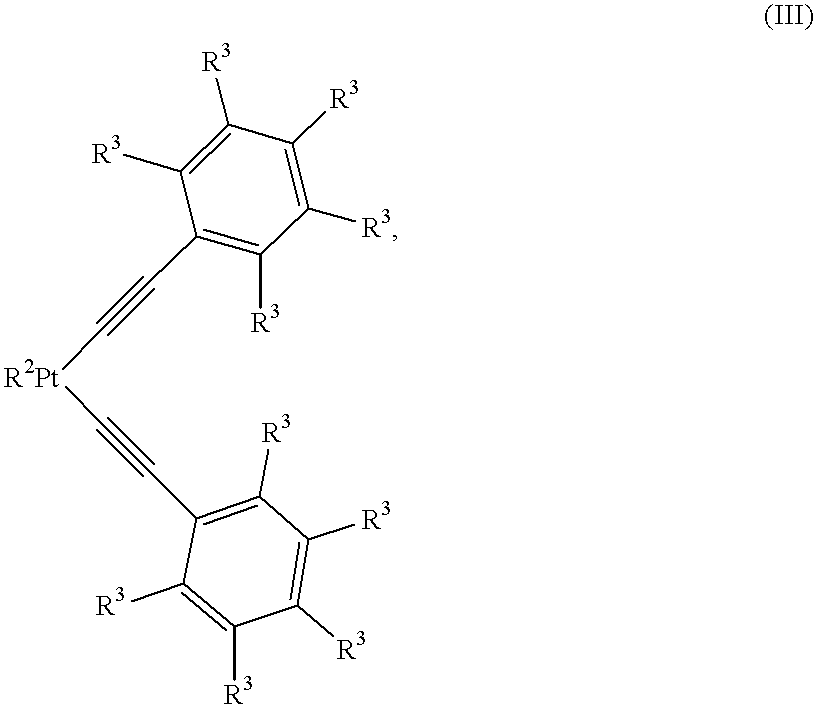Curable organopolysiloxane materials
a technology of organopolysiloxane and polysiloxane, which is applied in the direction of organic compounds/hydrides/coordination complex catalysts, organic chemistry, physical/chemical process catalysts, etc., can solve the problems of limited pot life at room temperature, need for an additional mixing step, and high risk of contamination by traces of platinum, so as to prolong the shelf life and prolong the pot life , the effect of extending the crosslinking rate or level
- Summary
- Abstract
- Description
- Claims
- Application Information
AI Technical Summary
Benefits of technology
Problems solved by technology
Method used
Image
Examples
example 2
The procedure described in Example 1 is repeated, with the modification that 30 mg of ethynylcyclohexanol were stirred in instead of 3 mg of ethynylcyclohexanol.
example 3
The procedure described in Example 2 is repeated, with the modification that 1.7 mg of catalyst 2, whose preparation is described above (corresponds to a content of 10 ppm of platinum, based on the total silicone material), were mixed in instead of catalyst 1.
example 4
The procedure described in Example 2 is repeated, with the modification that 2.2 mg of catalyst 3, whose preparation is described above (corresponds to a content of 10 ppm of platinum, based on the total silicone material), were mixed in instead of catalyst 1.
PUM
| Property | Measurement | Unit |
|---|---|---|
| viscosity | aaaaa | aaaaa |
| viscosity | aaaaa | aaaaa |
| viscosity | aaaaa | aaaaa |
Abstract
Description
Claims
Application Information
 Login to View More
Login to View More - R&D
- Intellectual Property
- Life Sciences
- Materials
- Tech Scout
- Unparalleled Data Quality
- Higher Quality Content
- 60% Fewer Hallucinations
Browse by: Latest US Patents, China's latest patents, Technical Efficacy Thesaurus, Application Domain, Technology Topic, Popular Technical Reports.
© 2025 PatSnap. All rights reserved.Legal|Privacy policy|Modern Slavery Act Transparency Statement|Sitemap|About US| Contact US: help@patsnap.com



